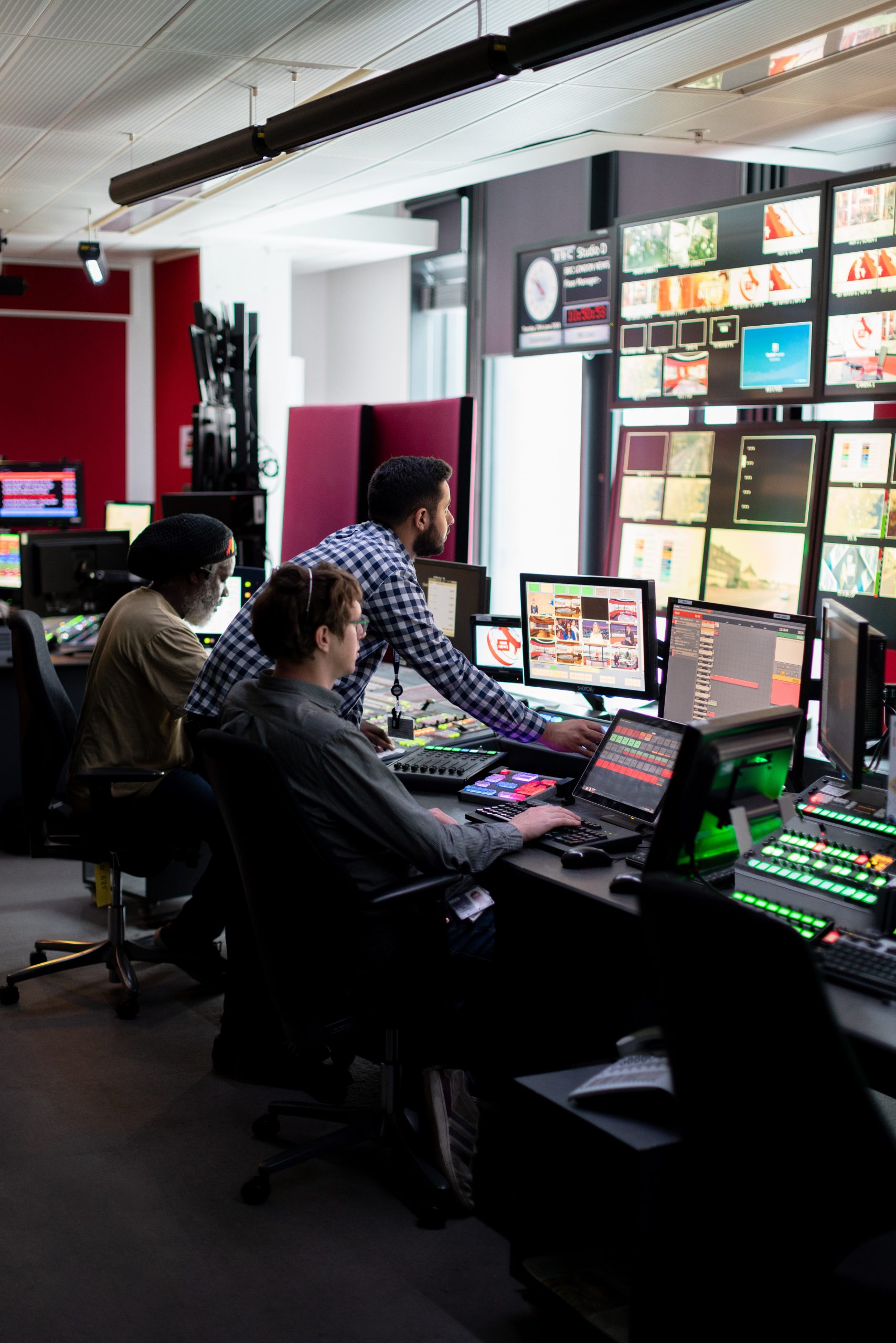2021 AI Trends
Artificial Intelligence continues to impact every facet of our economy and, as we turn the page on a new year, the Radical team identified five AI trends we anticipate will gain momentum in 2021.
1) Healthtech Acceleration: The dawn of digital medicine (The Economist)
“By exposing such digital deficiencies, the pandemic is at last spurring change. Confronted with shutdowns and chaos, doctors have embraced digital communication and analytics that have been common in other industries for years. Patients are growing more comfortable with remote and computer-assisted diagnosis and treatment. And enterprising firms, from health-app startups and hospitals to insurers, pharmacies and tech giants such as Amazon, Apple and Google, are scrambling to provide such services.
McKinsey estimates that global digital-health revenues—from telemedicine, online pharmacies, wearable devices and so on—will rise from $350bn last year to $600bn in 2024.”
Radical Commentary: Last year, we wrote extensively about the acceleration of technology in the healthcare industry due to COVID-19. In 2021, we anticipate hybrid models of care and delivery to become the new normal. Going to a crowded doctor’s office, hospital or clinic for primary care will be augmented by a spectrum of tried and tested digital tools at the fingertips of consumers. Remote assistants and sensors will also see major adoption across clinical settings driven by an increased trust in these solutions.
The acceleration of digitization we saw in 2020 and the resulting data generated from these applications will set the foundation for yet another wave of healthcare solutions over the next 10 years where AI is positioned to play a greater role.
We expect to see AI play a larger role in discovering biomarkers and determining treatment pathways as digital therapeutics rooted in evidence-based care will continue to see growth across chronic conditions. Demand for tools supporting mental health will also increase as second-order impacts arising from the global Covid experience take hold.
2) Material Discovery: Synthetic biology 2020–2030: six commercially-available products that are changing our world (Nature Communications)
“Products from synthetic biology are rapidly permeating society and by 2030, it is highly likely that you will have eaten, worn, used or been treated with one.
… products that best highlight the application of synthetic biology tools developed 2000–2020 and are available now or by early 2021 2,3,4. The first three represent chemicals produced by engineered cells or enzymes (leghemoglobin, sitgaliptin, diamines) that are isolated and purified. For the second three, the products are the engineered cells themselves (engineered bacteria, CAR-Ts, genome-edited soy). The development of these was enabled by advances in metabolic engineering, directed evolution (awarded the 2018 Nobel Prize), automated strain engineering, metagenomic discovery, gene circuit design, and genome editing (awarded the 2020 Nobel Prize).”
Radical Commentary: Synthetic biology products are hitting the market after two decades of development, enabled by a confluence of technologies including computational design. This trend will continue to accelerate as computational-first approaches to chemistry and biology become the norm.
In 2021, two things are likely to happen as part of this trend. The first, is that large pharma and chemical companies will start to make large acquisitions of companies that have had early commercial success.
The second is the emergence of the “computational tools” category of pure software companies selling into the biotechnology and chemistry industries. This category may see strong growth in the near future.
3) Fintech for Everyone: If Fintechs Want To Generate Revenue, They Should Create A Financial Health Platform (Forbes)
“According to research from Cornerstone Advisors, roughly one in five Americans’ financial health situation is “dire.” Nearly half of the consumers in this segment can’t pay their bills on-time and in-full all of the time, and about three-quarters can’t make their loan payments every month.”
Radical Commentary: 2020 was a hot year for the fintech sector across the public and private markets. 2021 looks like it will be another stellar year for the sector, with themes of digital transformation, AI automation and embedded finance continuing into the foreseeable future.
We are also seeing the emergence of a new venture category: fintechs for financial health. This new venture category is topical, drawing attention from politicians, regulators, social commentators and the media. With household debt continuing to balloon and a larger proportion of the population struggling to meet their monthly bills, this new category of fintech is emerging to offer tools and platforms for improving the financial health of consumers.
Aside from the obvious benefits of helping people better manage their finances, improving the financial health and behaviour of consumers can add immediate value to stakeholders such as landlords, lenders, utility companies and recurring subscription services. The bigger prize, however, will be owning the distribution channel and data to offer personalized financial products at the right time, and possibly much more.
4) AI’s Security Moment: Hacking AI (Centre for Security and Emerging Technology)
“Machine learning vulnerabilities permit hackers to manipulate the machine learning systems’ integrity (causing them to make mistakes), confidentiality (causing them to leak information), and availability (causing them to cease functioning).
These vulnerabilities create the potential for new types of privacy risks, systemic injustices such as built-in bias, and even physical harms. Developers of machine learning systems — especially in a national security context — will have to learn how to manage the inevitable risks associated with those systems. They should expect that adversaries will be adept at finding and exploiting weaknesses. Policymakers must make decisions about when machine learning systems can be safely deployed and when the risks are too great.”
Radical Commentary: As we head into 2021, planning for a cybersecurity attack should be thought of as a “when” as opposed to as an “if” problem. Facing an increase in cyberattacks coupled with the vulnerabilities of newly distributed workforces, organizations are already adopting cybersecurity solutions and protocols to reduce risks posed by malicious actors and inadvertent leaks.
This extends to protecting any artificial intelligence used within the organization – an emerging challenge which comes with its own security issues. If these models are not well understood and protected, organizations could see massive breaches and inadvertent leaks of both proprietary model information and datasets.
Many companies are already working on private and secure AI protocols. Protections being developed will enable individuals and organizations to share data and have it encrypted and computed without ever decrypting the raw information. Private and secure AI could enable unprecedented data collaboration projects, opening up opportunities in healthcare and finance while also addressing growing industry interest in AI compliance.
5) Creative AI: ‘There’s a Wide-Open Horizon of Possibility.’ Musicians Are Using AI to Create Otherwise Impossible New Songs (Time)
“But there are many musicians who feel that the onset of AI won’t end human art, but spur a new golden era of creativity. Over the past several years, several prominent artists, like Arca, Holly Herndon and Toro y Moi have worked with AI in order to push their music in new and unexpected directions. Meanwhile, a host of musicians and researchers across the world are developing tools to make AI more accessible to artists everywhere. While obstacles like copyright complications and other hurdles have yet to be worked out, musicians working with AI hope that the technology will become a democratizing force and an essential part of everyday musical creation.”
Radical Commentary: As demonstrated at the annual NeurIPS conference, generative machine learning and machine creativity continues to grow and attract a wider audience. Generative models are enabling new types of media creation across images, music, and text. Recent advances include StyleGAN2, Jukebox, and GPT-3. Rather than replacing human creativity, these tools offer a novel source of human-machine collaboration. For example, AI is helping architects and manufacturers create structures that were once considered impossible to build by automating elements of design and reducing material usage and labour.
As we head into a new year, questions remain regarding AI’s capacity to create something that is meaningful, and novel, from scratch. AI models that can be taught to create without guidance or help from humans may offer valuable insights into the processes that guide our own creative thinking.
Radical Reads is edited by Ebin Tomy.

